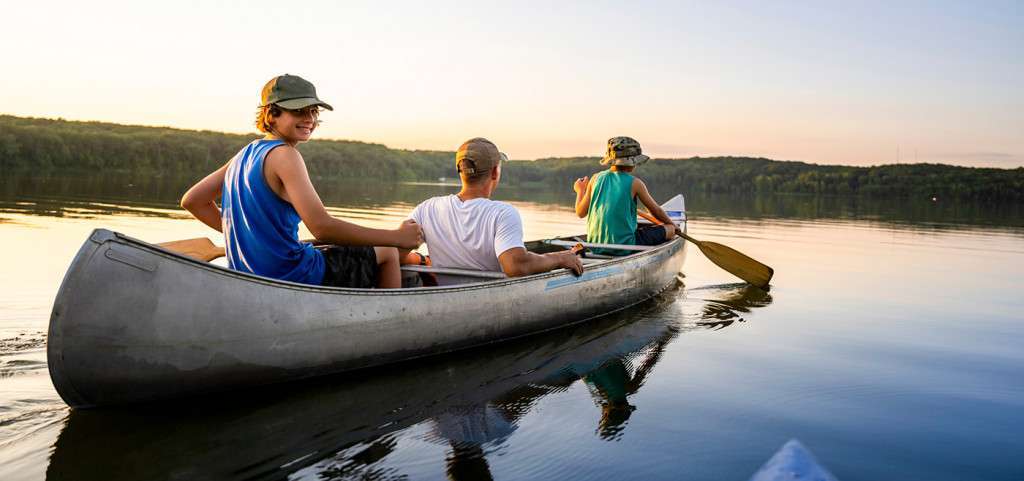Learning to handle a canoe is a lot like learning to swim. Once a child masters the skills needed, their confidence will carry them through many tricky situations.
Canoes can be tricky, tippy vessels to those who don’t know what they’re doing. But to a knowledgeable, confident paddler it’s quite a different animal. Panic and uncertainty are more dangerous than any storm, high wave or whitewater rapid. If you plan on spending any time on the water with your kids, getting them comfortable in a boat is almost as important as learning to swim.
Getting Started in Teaching Canoeing – Confidence Begins with Comfort
Most beginning canoeists are worried about the stability of the boat. To anyone who has tried standing up in a canoe, it quickly becomes apparent that they have a rather low center of gravity. However, it’s important for kids to know that falling out of a canoe is not the end of the world. If they are wearing Coast Guard approved (and required) flotation devices there is very little to be concerned about.
The best way to illustrate this point is to tip a boat over in shallow water and have kids swim around it while wearing their lifejackets. With competent adult supervision, invite them to check out the air pocket created by an upside down canoe. Although they should be reminded it’s not wise to play under a capsized canoe, addressing the child’s fears in a controlled setting will decrease the likelihood of panic in case of an actual emergency.
Finding the Right Fit for Canoeing Gear
When selecting a personal flotation device (PFD), one should always be aware of the weight recommendations printed on all Coast Guard approved devices. More importantly, however, is being able to adjust the PFD for a proper individual fit. Most PFDs have adjustable straps around the midsection, which should be pulled snug.
Next, you want to make sure the paddle is the right size too. The perfect paddle, when held vertically, will stand somewhere between the shoulder and chin.
Getting a Good Grip on the Paddle
Learning to hold the paddle the right way is more important than stroke technique to beginners, because you can’t have one without the other. To help kids better understand the importance of a balanced grip on the paddle, have them hold it correctly at about arm’s length in front of them (one hand on the top handle, the other near the blade). Then, have them slide the hand nearest the blade up the shaft towards the handle.
Note how the paddle becomes heavier and harder to control as the hands get closer together. Keeping a wide, comfortable grip on the paddle will give more power with less effort and get rid of a lot of the frustrating thrashing around that most beginners have to deal with.
Paddling Improves with Practice
The best way to learn canoeing is through practice and repetition. If you’re working with a large group of students, setting up a game of follow the leader is a good way to have kids focus on their steering skills. Games such as “keep away” (with a beach ball) or “tag” (by throwing a soaked sponge at opponents) are more subtle and fun ways for beginners to work on their skills while also becoming more comfortable in the canoe.

